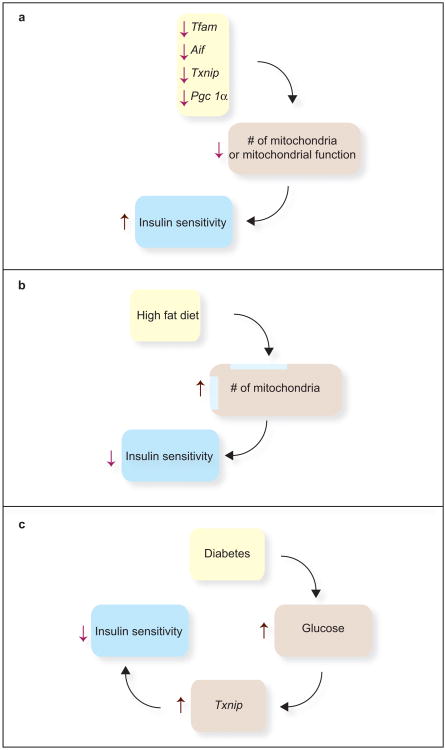Figure 1.
Experimental observations where mitochondrial function or number of mitochondria is negatively correlated with insulin sensitivity. (a) In four different knockout mouse models that affect mitochondrial function or number of mitochondria in skeletal muscle, there is a marked improvement in insulin sensitivity. (b) High-fat diets increase the number of skeletal muscle mitochondria. The effect on PGC1α is controversial. But, these diets are associated with reduced insulin sensitivity. (c) Hyperglycemia itself is associated with reduced muscle insulin sensitivity. A highly glucose-responsive gene, Txnip, when highly expressed, reduces insulin sensitivity and conversely, as illustrated in panel a, when knocked out in skeletal muscle, is associated with improved insulin sensitivity.

